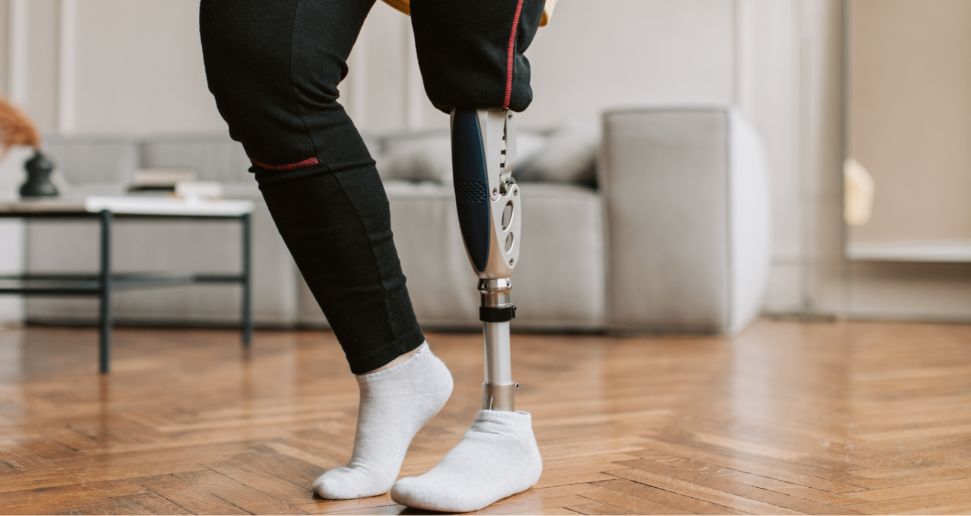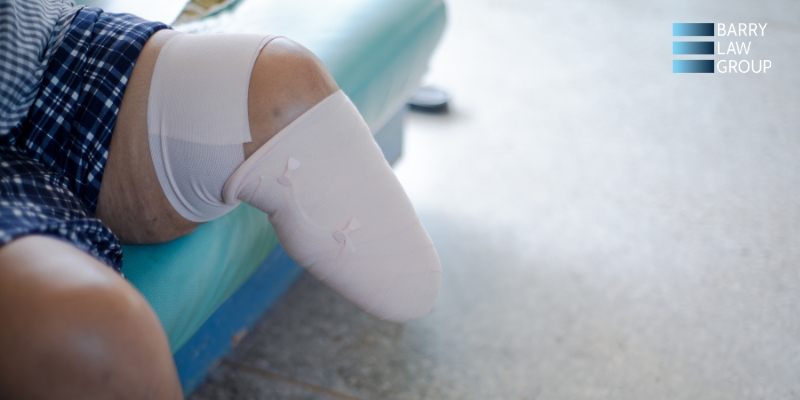Encino Amputation Injury Lawyer


Encino Amputation Injury Attorney
Most people in Encino, CA will never have to experience the loss of a limb due to amputation. Using our appendages is something that many take for granted until it is no longer a part of who we are. Unfortunately, amputations happen for several reasons, ranging from injury to illness. Although some injuries are the results of an accident, others are caused by negligence, particularly in the workplace. If your amputation is the result of an injury at work, you may be eligible to file a workers’ compensation claim.
Amputation Injuries
Amputations occur when a body part is completely or partially separated from the body. While some situations allow for reattachment, others result in permanent loss. Even if a limb can be reattached, there could be long-term damage or difficulties in using it. This can be both physically and mentally frustrating.
Complications from amputations can arise with both partial and complete amputations. Types of complications include infection, excessive bleeding, nerve damage, and other psychological or emotional effects.

Causes of Amputation Injuries
There are several situations that can cause a person to undergo amputation:
- Car, motorcycle, truck, bicycle, and pedestrian accidents
- Medical malpractice
- Wrongful amputation
- Construction or workplace accidents
- Defective products
- Explosive injuries from fireworks or improvised explosive devices
- Sporting accidents
While some of the injuries suffered in these situations are truly accidents, any harm that occurs due to the negligence of others should result in the responsible parties being held accountable. This is particularly true in the workplace.
Common Amputations
Any part of the body’s extremities can be amputated. These extremities are categorized into two parts of the body: upper and lower extremities.
Upper extremities include body parts such as fingers, hands, or arms. Amputations on this area of the body include:
- Digit amputation. The removal of all or a portion of one’s fingers or thumbs.
- Metacarpal amputation. The removal of the hand below the wrist.
- Transradial amputation. The removal of the forearm below the elbow.
- Transhumeral amputation. The removal of the arm starting above the elbow joint.
- Shoulder disarticulation. The removal of an entire arm up to the shoulder but not through the shoulder.
Lower extremities refer to the toes, feet, or legs. Examples of amputations in this area include:
- Digit amputation. Removal of part or all of the toes.
- Partial foot amputation. A part of the foot is taken.
- Transtibial amputation. Amputation that occurs below the knee and above the foot, thereby preserving the ability to use the knee.
- Transfemoral amputation. Amputation that occurs above the knee but below the hip and involves cutting through the thigh bone.
Some amputations of the lower extremities may involve an amputation through the hip or pelvic area. However, these instances are rare, and some doctors are able to perform an internal amputation in the pelvis that preserves the use of the leg.
A person who experiences amputation in these areas may choose to utilize the help of a prosthetic limb. This is usually fitted within 30 days of surgery.
The Value of Your Amputation
If your amputation was caused by the negligence of others, you may be entitled to certain compensation as a result. Because each case is unique, you should not assume that you will be awarded damages. Possible damages that you can claim include:
- Medical expenses. Because the cost of amputation treatments can be excessive, seeking reimbursement for medical bills including emergency room visits, surgeries, hospital stays, testing, and even long-term care can be a part of the awarded damages.
- Lost wages. Because the amputation likely caused you to miss work for not only the initial medical treatment but recovery time as well, the inability to return to your job will result in an unexpected decrease in income, which may be recoverable.
- Pain and suffering. Because physical pain can lead to emotional trauma, pain and suffering are part of the recovery process. Because of the severity of the injury, there will likely be a change in lifestyle that can see a decrease in enjoyment. This part of any settlement can be difficult to quantify but often leads to higher settlements in these types of cases.
- Permanent disability and disfigurement. As there are involuntary permanent changes in physical ability and appearance, amputees who suffer because of others are entitled to seek compensation for it.
In claims involving amputation, settlements are governed by comparative liability laws. This means that the amount of potential compensation is determined by the amount of fault both parties are deemed responsible for. If, for example, a jury finds you 30% responsible for the injury, you may be awarded 70% in cost recovery. However, if there is shared fault, there will likely be insurance companies involved who will mutually try to recover damages for their clients.
FAQs About Encino, CA Amputation Injury Law
What Can I Claim as an Amputee?
As with many California personal injury cases, if your amputation was the result of another’s negligence, you may be entitled to compensation for medical expenses, loss of wages, pain and suffering, disability, and disfigurement. These claims are to supplement the loss in quality of life you may have suffered because of the negligent party.
How Much Money Do You Get for Losing a Limb?
The type of limb that is lost will determine the potential compensation that you may receive. The loss of a finger or toe, for example, is approximately $20,000. However, if there is the loss of a leg, your compensation could be more than $100,000. This is prior to any additional settlement, such as disability benefits.
What Is Considered a Loss of Limb?
Limb loss or removal refers to the loss or removal of a body part such as a hand, finger, arm, foot, toe, or leg. Each of these can be life-changing and impact your job, personal relationships, and your ability to move, work, or interact with others in an independent way. Many times, the loss of a limb is accompanied by emotional trauma or continuing physical pain.
How Painful Is Losing a Limb in an Accident?
Many amputees will say that the physical and mental pain experienced in an accident is excruciating. However, while that pain can eventually be managed through surgery and medical assistance, many will also talk about the chronic and ongoing physical and mental pain that is a result of the experience.
Loss of Limb Attorneys
If you have experienced an accident that has led to an amputation procedure, contact the Barry Law Group. We will review the circumstances of your accident to help determine responsibility and to help you recover any damages that you may be entitled to. Whether the accident was in the workplace or the result of another, you should not have to pay for someone else’s negligence.
Success of Your
Legal Matter.
Barry Law Group is comprised of attorneys and longtime staff members who are committed to the success of your legal matter. The firm understands that for most litigation is uncharted worrisome and often terrifying.


